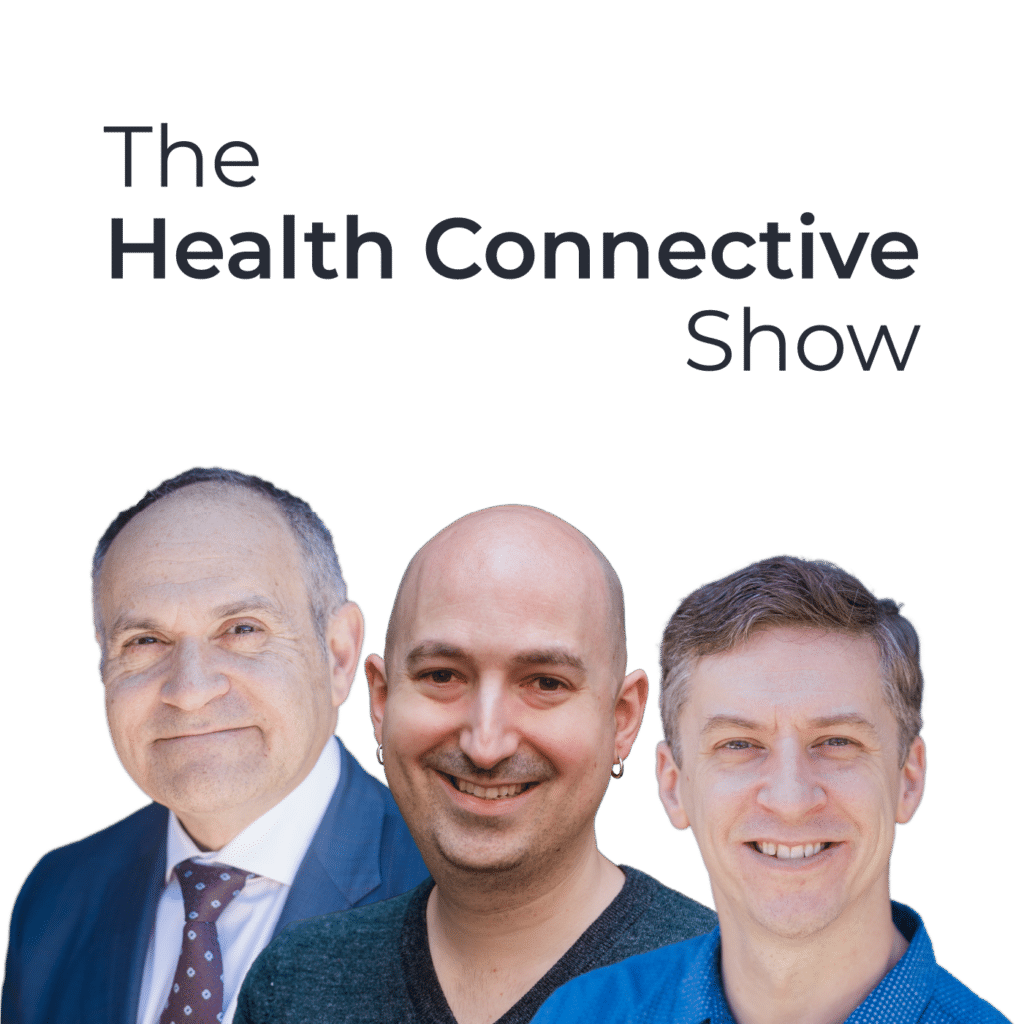
Surgical Robot Automation in the Age of AI with Dr. Lukasz Kowalczyk
Aired On: July 8, 2025
Dr. Lukasz Kowalczyk, founder and CEO of Soothien HealthTech Advisory, joins hosts Michael Roberts, Scott Zeitzer, and Justin Bantuelle to discuss surgical robotic automation in the age of AI. They discuss how we can harness data in a way that is useful to physicians in a clinical setting and how AI tools can help in that regard.
Add to Your Queue
Resources
More Episodes
AI’s Role in Proactive Healthcare with Adityo Prakash
April 9, 2024
Positioning AI-Enabled Medical Devices in the Market with Dr. Ronald Razmi
May 7, 2024
electronRx’s Mission for Early Disease Detection with Dr. Bipin Patel
November 12, 2024
In this Episode
- 05:45 AI in Gastroenterology
- 08:58 Operational Challenges in AI Adoption
- 11:49 Understanding User Personas
- 15:03 Designing for Value in Health Tech
- 24:03 Data Maturity and Integration Challenges
- 26:59 Monetizing Healthcare Data
Quotes From This Episode
There’s this concept in tech of minimum viable product. In health tech, that’s got to get changed. The V’s gotta get changed to ‘valuable.’ What’s your minimum valuable product?
Dr. Lukasz Kowalczyk
You have to design for the action. What is the clinical action or what action is going to take place? I think that’s what every company right now is trying to figure out. Where are the data sources that you need to do that? To get that valuable data back.
Dr. Lukasz Kowalczyk
Understanding persona is absolutely essential because then that drives your product roadmap. You understand how those values drive back into not only your product, but your sales operations, your marketing, everything.
Dr. Lukasz Kowalczyk
Understanding Physician Needs in Medtech Product Development
Note: This article originally ran in the Journal of Orthopaedic Experience & Innovation (JOEI) on September 3, 2025.
On our podcast, the Health Connective Show, we have had the opportunity to interview different stakeholders involved in product development. Many of those discussions have highlighted the value of understanding the needs of the end user (often physicians) and how that can factor into product development, processes, and beyond.
Medtech product development is not just about solving a problem in healthcare. You also have to consider how the technology fits into the physician’s workflow and the value it brings to the table compared to the current standard processes. This is where gaining insights from target user groups and building out user personas become essential to the development process.
The Value of Personas in Medtech Product Development
In a recent interview with Dr. Lukasz Kowalczyk, founder and CEO of Soothien HealthTech Advisory, he made some great points about the need to understand personas.
On the topic of personas, Dr. Kowalczyk said:
“One of the core metrics is understanding your persona value chain. You have to understand who you’re talking to from the get go. And the reason health tech is hard is because you’re talking to multiple people. Your user is not your champion, is not your buyer.
And the question is, who do you need to design value for? The hard answer is … for everyone from all the way to the C-suite down to the user.
“Understanding persona is absolutely essential because then that drives your product roadmap. You understand how those values drive back into not only your product, but your sales operations, your marketing, everything.”
While physicians are often the primary end users of healthcare technology, they aren’t the only ones medtech companies need buy-in from. Physicians typically need approval from the C-suite before new technology can be purchased, and that group will have different needs and priorities than physicians do. By understanding these different personas and their needs, we can develop better products that serve everyone’s needs.
You can then use that same information to support the sales team by developing copy and talk tracks that highlight customer pain points and resolve those dilemmas with solutions that uniquely appeal to your audiences.
How Physicians’ Needs Can Inform Product Design
The quote from Dr. Kowalczyk highlights an important lesson: You have to understand what the end user needs out of the device, whether that includes physicians, patients, nurses, or some combination of that.
In an interview with Tyler Hissong, an engineer at Treace Medical Concepts, he echoed a similar sentiment:
In the medical device world, Verification and Validation are the key metrics of ‘Did you make the device right?’, and ‘Does the device solve the problem?’ As an engineer, this really boils down to spending up-front time with the actual end user, or a diverse group of users, to get at what they need.
“Ultimately, as the engineer, it’s my job to determine what the users are asking for, but more importantly, what the users are needing to solve. I’ve often found that defining a problem statement, with the users, is more challenging than solving the problem itself. It takes time to form, adjust, reform, and readjust the problem to meet what the user truly needs. Bringing the user into that process is the ultimate way to make sure you are not only making a sound product (verifiable), but that the product solves their root issue (“validatable”).”
Understanding user needs and getting that feedback can help you solve their problem more efficiently.
How Physician Needs Can Influence Processes
The needs of your end users (physicians) can also help to inform all of the processes around using the device itself.
Sterilization or single use? What kind of packaging do you use? How is the item delivered? What kind of experience are you providing to customers?
Episurf is one company that has built their processes around the customer’s needs. In an earlier podcast interview with Episurf’s president Patrick Jamnik, he explained how their portal makes the process of ordering a custom implant easier on the physician than other similar products on the market:
Surgeons need to approve the products, but I’ve been a part of at different companies throughout the course of my career and different types of custom produced things, the surgeon would have to go in and log in, but they would have to log in from a desktop because the software only worked in a way that like they only could do it from a desktop.
“So they try to get a surgeon who’s busy either seeing patients or operating, like, ‘Hey, I need you to go to your office and then go in and log in and I know you forget your password, but just click on the reset password, then go check your email, we’ll send you a new password,’ and you know, all of this just to click a green box. That’s kind of a pain for them to do. So we try to make our approval process as easy and as painless as possible for the surgeons.”
Some processes are baked into the product design by necessity, but other elements like shipping and overall customer experience can be more flexible. This is something marketing and sales can help surface from customer feedback.
This kind of customer insight can help create a better product, improve marketing’s relevance, and increase sales.
Going Beyond the “Minimum Viable Product”
The goal is not to just get a product on the market for the sake of doing it. You need something that physicians want to use. Where can you provide value?
I’ll leave you with one final quote from Dr. Kowalczyk:
There’s this concept in tech of minimum viable product. In health tech, that’s got to get changed. The V’s gotta get changed to ‘valuable.’ What’s your minimum valuable product?”
Physicians seek products that add value to their day, whether in time savings, better outcomes, or ease of use. Getting that feedback while the product is in development helps medtech companies start out on the right footing with their target customers.



